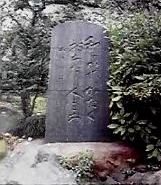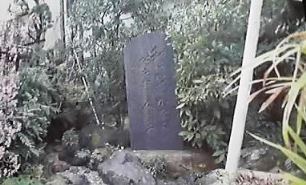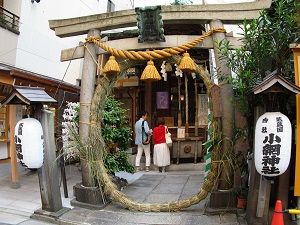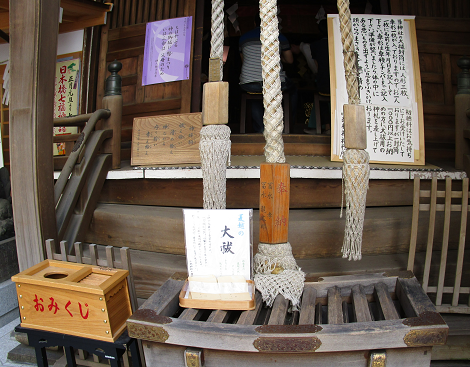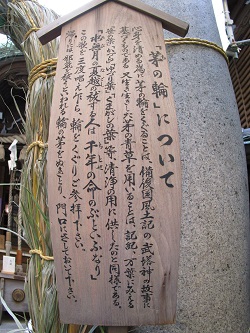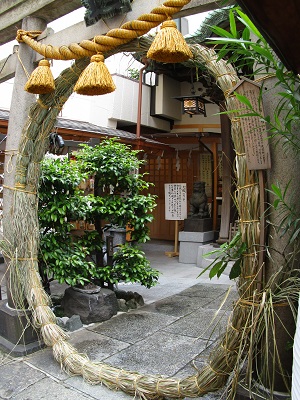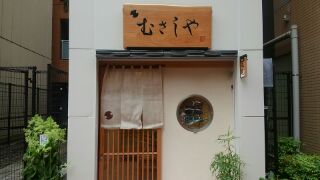Nice to meet you, this is Minori.
This year is the main festival of Tsukuda and Sumiyoshi-jinja Shirine.
The fifth generation Kawayanagi Mizutani Ryotei stone monument, related to Tsukuda, is located on the grounds of Sumiyoshi-jinja Shirine.
I would like to introduce this Sumiyoshi-jinja Shirine and the fifth generation Kawayanagi Mizutani Ryotei stone monument.
stone monument was built in 1966 by the people of Tsukuda.
![]() Sumiyoshi-jinja Shirine (1-1-14 Tsukuda, Chuo-ku)
Sumiyoshi-jinja Shirine (1-1-14 Tsukuda, Chuo-ku)
<enshrined deity> Bottom Tsutsuno's life Nakatsuno's life, Tsutsuno's life (Mikami Sumiyoshi)
Breathing Princess Himemei Empress Jingu
Tosho's life (Azuma Terumioya no Mikoto) Ieyasu Tokugawa
<auxiliary shrine> Ryu Shrine, Epidemi Shrine, Pox Shrine, Irifune Shrine, Funatama Shrine, Inari Shrine
(From the bulletin board of Sumiyoshi-jinja Shirine)
<History>
Fishermen in Tsukuda Village in Settsu (Tsukudada, Nishiyodogawa-ku, Osaka) visited Sumiyoshi-jinja Shirine and other places when Ieyasu Tokugawa visited Japan.
There has been a connection since passing the Kanzakigawa River, and was greeted by Edo around 1612 (1612).
At first, he lived in the warehouse of Mamoru Ando in Koamicho, where he recommended his hometown Sumiyoshi guardian god, and later.
The land of Tsukuda Island was issued and created, and in 1646, shrine hall was built at the current location of the island and relocated.
In 1699, it was incorporated into a historic site (shrines and temples, which was built before 1631, 1631).
Shinto priesthood was inherited by Tsumori (later renamed Hiraoka). Our company is not only the guardian god on Tsukuda Island, but also the
Due to the fact that the front of the company was Minato of the ships of various countries, like the gunshot Inari Shrine on the opposite bank, the religion of shipping companies was strong.
He was also believed by related wholesalers. In 1705 (1705), a friend of Edo descent sake ruler formed Sumiyoshi-ko.
Every year on New Year's Day and September, the dedication of Garden Kagura was decided, and in 1843 (1843), Kobunamachi Gumi of a bonito wholesaler
It is also a sign that every April, we decided to dedicate Kagura of bonito fishing.
("Chuo-ku Cultural Properties (4)" Tangible Folk Cultural Properties-Religion-Published by Chuo-ku Board of Education)
![]() Gosei Kawayanagi Mizutani Ryotei stone monument (1-1-14 Tsukuda, Chuo-ku)
Gosei Kawayanagi Mizutani Ryotei stone monument (1-1-14 Tsukuda, Chuo-ku)
Mizutani Ryotei (1787-1858) was born in Minami Kayabacho, "now Nihonbashikayabacho".
It is reported that he lost his father when he was young and was received next to Tsukudashima fishermen Taihei, and served as village headman on Tsukuda Island.
(From the bulletin board of the Chuo-ku Board of Education in the precincts of Sumiyoshi-jinja Shirine)
